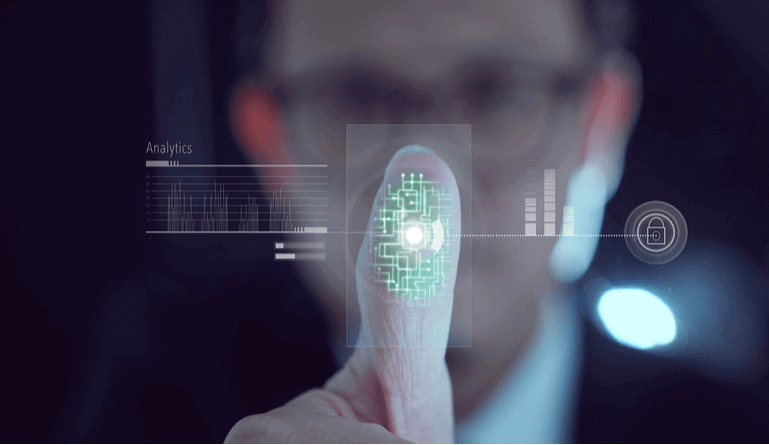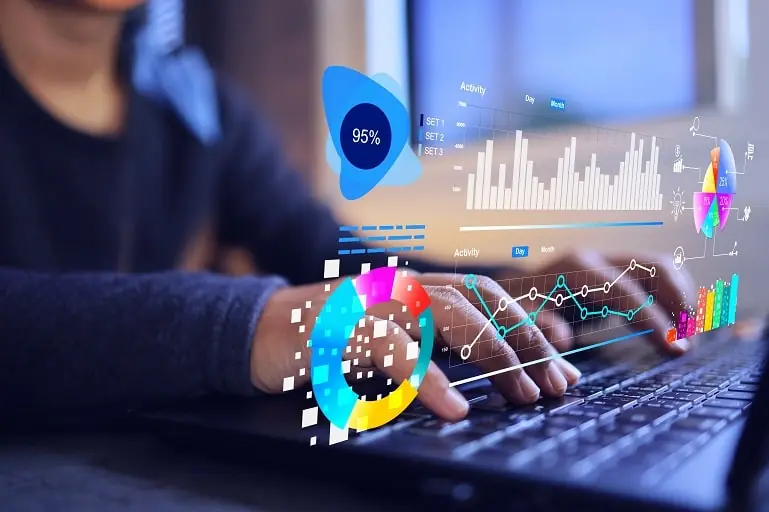What is Security Analytics
Security analytics simply refers to the field that evaluates unprocessed logs of data in order to identify and report any prohibited actions. The primary aim of security analytics is to increase cyber security by all means necessary. Security analytics is the act of collecting data, aggregating these data, and analyzing the data with the security analytics tools so as to ensure the safety of the cyber security and detect any symptoms of a threat.
Many organizations, businesses, companies, countries, and systems are challenged with increasing the threats to cyber security all over the world. Data system infiltrators are on the rise and they
How Security Analytics Works
Security analytics is not a single tool or system. Rather, it is a proactive network that is engaged in countering cyber attacks. Here is how it works:
- It evaluates system data from a plethora of sources so as to maintain and come up with better security standards. Security analytics involves the accumulation of data from as many sources as possible.
- It involves finding the sequence in which the log data are structured. Finding these patterns and sequence helps to identify potential cyber attacks that may occur soon in the nearest future.
- The accumulation of these data sets can be gotten from numerous sources such as: routers, business applications, the event logs of operating systems, cloud resources, network traffic, endpoint and user behavior data.
- Other data sets include virus scanners, identity and access management data, Non-IT contextual data, firewalls, external threat intelligence sources etc. Big data security analytics employs well structured algorithms in the analysis of these data sets so as to ensure maximum cyber security.
- The advancement in cyber security analytics technologies enables adaptive learning systems to be able to detect anomaly logic based on past experiences and learning processes. The benefit of these technological advancements allows the scope of security analytics to also analyze real time data. These real time data includes IP context, threat intelligence, geo location, and asset metadata.
- The role of machine learning in the activities of security analytics can not be undermined. Machine learning accounts for one of the advancements in technology that allows security analytics to be able to analyze threat intelligence. This helps to provide quick proactive response to threat and to further solve forensic related problems.
Security Analytics Use Cases
Security analytics encompasses numerous use cases. Some of the most common use cases includes:
- The analysis of network traffic: under this use case, it helps to link certain activities so as to unravel a sequence that may signify a looming attack on the system.
- Identification of endpoint threats: here, it manipulates endpoint threats in order to detect and report potential attackers planning to infiltrate the endpoints of a system.
- Detection of Data Ex-filtration by Attackers: In regard to this use case, the function of security analytics is to hinder the prohibited downloading, copying, or transferring of data from a system. In order to achieve this aim, security analytics automatically blocks any unfamiliar channel of communication. It stops users from submitting their details to any unaffiliated sites. This therefore prevents identity theft by attackers.
- Monitoring of employees to identify and report internal threats: this use case explains the depth of the functions of security analytics. Here, security analytics monitors crucial systems and evaluates user activities. This is done in order to detect any unusual behaviors that may signify threats from the inside. Security analytics does this by monitoring even the authorized users through a number of options such as forensic abilities, keystrokes, and metadata.
- Aiding compliance with the set organization regulations: The platform assists organizations in the automation of compliance requirements. These requirements include collection of log data, monitoring of data actions, management of individual data network, and the compilation of reports. This will enable the compliance authority to detect and sanction every non-compliant users.
- Monitoring User Actions to Identify Certain Threats: It employs user and entity behavior analytics (UEBA) to examine unusual actions. This is done by utilizing algorithms that will expose suspicious sequences and detect symptoms of offensive actions in the user patterns.
There are also some other Use Cases.
They include:
- Identification of prohibited user account usage, such as sharing of accounts.
- Identification of susceptible and already compromised accounts in the system
- Investigation of incidents; the source and events that characterize the incidence.
- Adequate demonstration of compliance during organizational audits
- Hunting and exterminating of potential threats
(Download Whitepaper: 3 Steps to Transform Your IT Security)
Top Benefits of Security Analytics
Without any doubts, security analytics provides a variety of benefits.
Below are some of these benefits:
-
Security Measures
One of the most important benefits is it can be seen in its function of detecting threats and potential breach of security. Not only does it detect security threats, it also responds by alerting you of these security incidents. This is simply referred to as proactive security measures.
Security analytics is able to perform this function by evaluating numerous log data from various sources. It then calculates the correspondence between certain events. This is why it is useful in almost any field or industry.
-
Maintenance of Obedience to Regulatory Policies
A major objective of the tools lies in the correspondence to governmental and organizational policies. By employing the use of security analytics tools, a security analyst can easily process a collection of data sets. This helps to provide an organization with cohesive overview of every data activities across a plethora of devices. By implication, authorities that monitor user compliance to regulatory policies are able to identify non-compliant users.
-
Advancement in Forensics Science
The field of forensics science also benefits from the vast benefits of security analytics. This is because it can be employed in carrying out forensic findings about a case. The beauty of security analytics in this regard can be demonstrated in how it is able to:
• Identify the source of an incidence
• Identify the events that precipitated a compromise
• Identify the kind of resources that were compromised
• Identify the type of data that was lost
• And predict the timeline in which the attack took place.This ability to evaluate and restructure the facts of an attack helps to increase organizational defenses. This prevents the re-occurrence of such an incidence later in the future.
Security Analytics Market
According marketsandmarkets.com(1), the cyber security data analytics market has an estimated size of $7.8 billion US dollars as at last year. It has further evaluated that this estimated market size is expected to increase to approximately $18.1 billion dollars in the year 2024.
The increase rate has been estimated at a Compound Annual Growth Rate (CAGR) of 18.2% during the period of the forecast. The driving elements pushing the market forwards comprises of the ever increasing need to:
The driving elements pushing the market forwards comprises of the ever increasing need to:
- Maintain compliance with regulatory policies
- Uncover potential threat sequences
- Prioritize system based threats with executable solutions. This helps to prevent the loss of vital data. It also aims to avoid unauthorized system infiltration.
It is however pertinent to expound that the global security analytics market suffers from a number of challenges such as:
- Insufficient user knowledge about security threats and attacks
- Low budgets
- High cost of innovation that leads to a distortion in the growth rate of the market.
There are certain basis upon which the market is categorized into and they include:
-
Services
Here, the managed activities of the global market has been forecasted to increase at a skyrocketing rate in the following years to come. Under this category, there are two types of services which are professional and managed services. The professional services includes support and maintenance, training and education, and consulting services.
-
Basis of Initiation mode
Under this category, the market has been reported to accumulate large market demand. This is as a result of the increasing organizational needs to comply with different regulatory policies all over the world. The basis of initiation could be deployed either On-premise or Cloud.
-
Region
Based on geography, the world market has been categorized into Asia-Pacific, Latin America, North America, Europe, and Middle East and Africa (MEA). According to experts, the North American market is expected to control the largest proportion of the world market.
Thereafter, the European market is expected to be the second largest revenue generating region for vendors in the market.
Thanks to the contributions of advanced countries such as Canada and the United States, the market growth is witnessing tremendous growth due to continuous and heightened emphasis on security technology in these regions. The introduction of mobile based and web based business applications has also pushed the Asia-Pacific market to advance at a significant rate.
In North America, the major countries promoting the growth of the market in the region are United States, Canada, and Mexico. In Europe, they are the United Kingdom, Germany, France and the other nations of the region. In Latin American region, the major contributing countries are Brazil, Chile, and the rest of the Latin American region.
In Asia-Pacific, the countries most active are China, Japan, India Philippines, and the other countries in the region. Lastly, in the Middle East and Africa (MEA), the countries most active in the growth of the market are Saudi Arabia, South Africa, and the other countries in the region.
-
Applications
This category involves the different applications for which the innovative solutions are employed in the market. These applications include endpoint security analytics, web security analytics, network security analytics, application security analytics, and many more.
-
Industry Vertical
This category describes the growth index and direction of the market as a result of the increasing effects of IoT, BYOD, and other connected devices. This category encompasses basic fields such as IT & Telecom, Energy and Utilities, Government and Defense, Consumer Goods and Retail sales, BFSI, Transportation sector, Manufacturing sector, Educational sector, Healthcare sector, and others.
Below is a list of some of the major vendors that provide innovation in the market all over the world:
- Hewlett Packard Enterprise
- Arbor Networks, Inc.
- Blue Coat Systems
- FireEye, Inc.
- Cisco Systems
- Alert Logic
- EMC RSA
- AlienVault, Inc.
- IBM Corporation
- Exabeam
- Hillstone Networks
- Juniper Networks
- Gurucul
- Securonix
- LogRhythm, Inc.
- Assuria
- Haystax
- Forcepoint
- Alert Logic
- Rapid7
- Splunk
- RSA
- Huntsman Security
- McAfee
- Symantec
The security analytics market features both small and medium-sized enterprises (SMEs), and Large scale businesses.
Security Analytics Tools
The activities involves the deployment of certain tools in order to fully execute its primary object of protecting cyber security.
Below are the security analytics tools:
- Tools for log evaluation applications for endpoints, IPS, firewalls, severs, IDS, and networked print devices.
- Data Loss Prevention (DLP) tools
- Tools for code evaluation applications so as to detect compromises in the system.
- Tools for file evaluation so as to analyze files in situations that may be above malware detection.
- Tools for Security Operations Center (SOC) particular applications in order to arrange data in such an orderly manner that makes them beneficial to the user.
Final Thoughts
You should know that a brilliantly deployed security analytics procedure can greatly boost your SIEM. Do you know that the cost of security breach in the United States, as reported by IBM, is estimated to be $7.35 million?
This is all the more reason you and your organization must work to engage the limitless capabilities of security analytics in order to protect your business and organizational systems from breaches.







